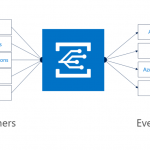This post was originally published here
Microsoft has released yet another service in its Azure Platform named Event Grid. This enables you to build reactive, event driven applications around this service routing capabilities. You can receive events from multiple source or have events pushed (fan out) to multiple destinations as the picture below shows.
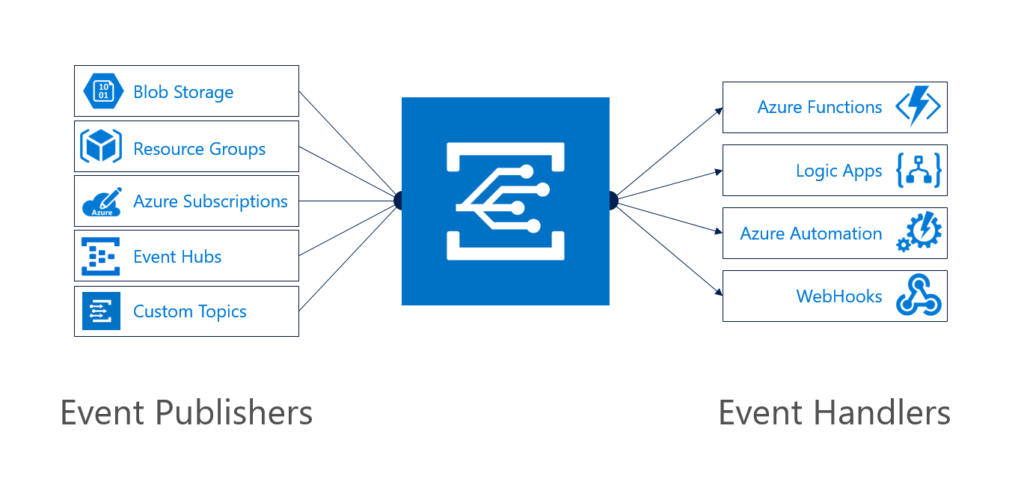
New possible solutions with Event Grid
With this new service there are some nifty serverless solution architectures possible, where this service has its role and value. For instance you can run image analysis on let’s say a picture of someone is being added to blob storage. The event, a new picture to blob storage can be pushed as an event to Event Grid, where a function or Logic App can handle the event by picking up the image from the blob storage and sent it to a Cognitive Service API face API. See the diagram below.

Another solution could involve creating an Event Topic for which you can push a workload to and an Azure function, or Logic App or both can process it. See the diagram below.
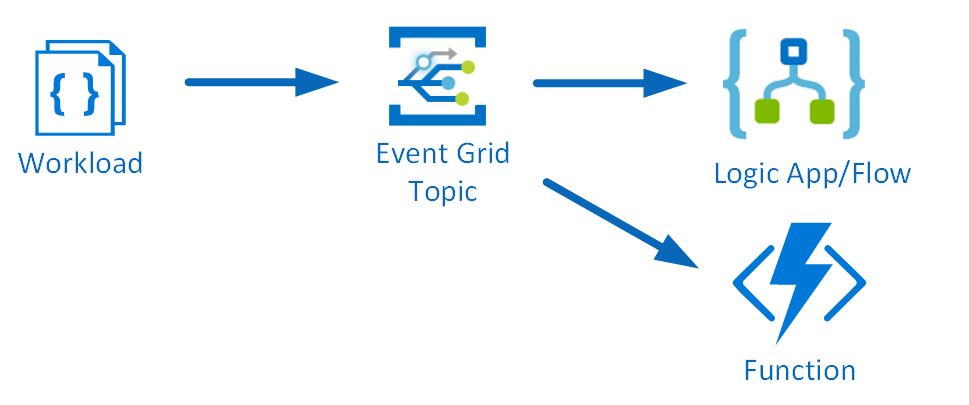
And finally the Event Grid offers professional working on operation side of Azure to make their work more efficient when automating deployments of Azure services. For instance a notification is send once one of the Azure services is ready. Let’s say once a Cosmos DB instance is ready a notification needs to be sent.

The last sample solution is something we will build using Event Grid, based on the only walkthrough provided in the documentation.
Sent notification when Cosmos DB is provisioned
To have a notification send to you by email once an Azure Service is created a Logic App is triggered by an event (raised once the service is created in a certain resource group). The Logic App triggered by the event will act upon it by sending an email. The trigger and action are the Logic and it’s easy to implement this. And the Logic App is subscribing to the event within the resource group when a new Azure Service is ready.
Building a Logic App is straight forward and once provisioned you can choose a blank template. Subsequently, you add a trigger, for our solution it’s the event grid once a resource is created (the only available action trigger currently).
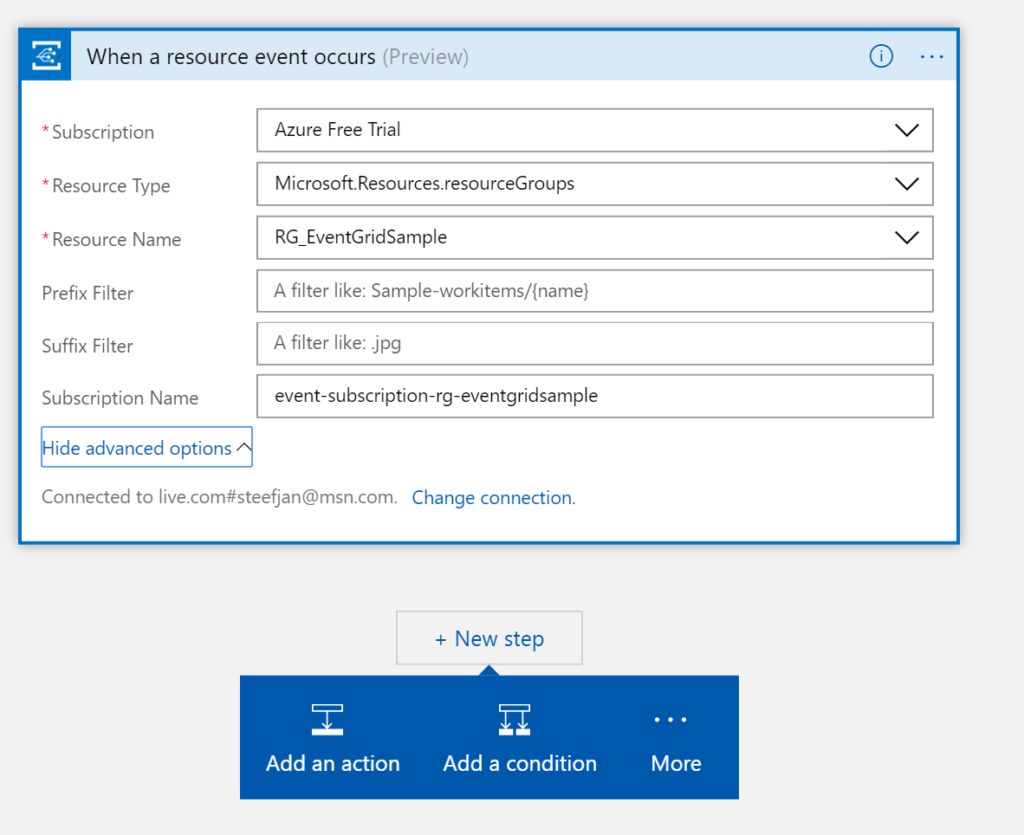
The second step is adding a condition to check the event in the body. In this condition in advanced mode I created : @equals(triggerBody()?[‘data’][‘operationName’], ‘Microsoft.DocumentDB/databaseAccounts’)
This expression checks the event body for a data object whose operationName property is the Microsoft.DocumentDB/databaseAccounts operation. See also Event Grid event schema.
The final step is to add an action in the true branch. And this is an action to sent an email to an address with a subject and body.
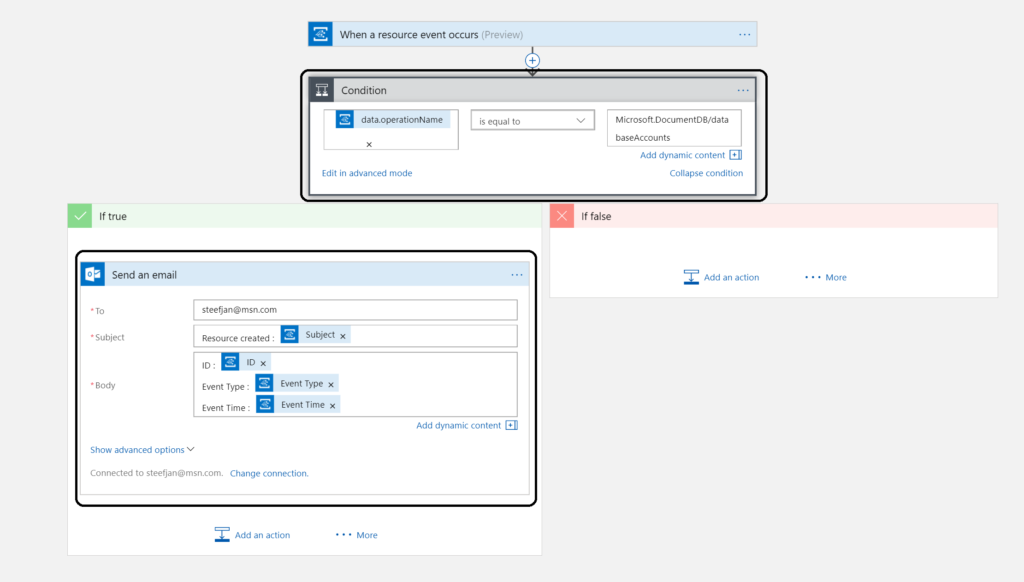
To test this create a Cosmos DB instance, wait until its provisioned and the email notification.
Note: Azure Resource Manager, Event Hubs Capture, and Storage blob service are launch publishers. Hence, this sample is just an illustration and will not actually work!
Call to action
Getting acquainted with this new service was a good experience. My feeling is that this service will be a gamechanger with regards to building serverless event driven solution. This service in conjunction with services like Logic Apps, Azure Functions, Storage and other services bring a whole lot of new set of capabilities not matched by any other Cloud vendor. I am looking forward to the evolution of this service, which is in preview currently.
If you work in the integration/IoT space than this is definitely a service you need to be aware and research. A good starting point is : Introducing Azure Event Grid – an event service for modern applications and this infoq article.
